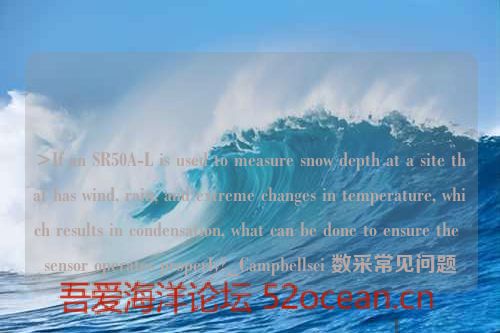The SR50A-L must be vented to the atmosphere to operate correctly. This is normally not a problem in alpine conditions, but in temperate, damp climates, the vent may introduce condensation that will ultimately disable the sensor. To combat this, a small package of desiccant is placed inside the sensor head, which will keep the interior dry under most conditions. If especially wet or condensing conditions are expected, the desiccant should be changed frequently to prevent moisture accumulation. Campbell Scientific offers a desiccant ½ unit bag (pn 905) and a 0.75 g desiccant bag (pn 4091).
>If an SR50A-L is used to measure snow depth at a site that has wind, rain, and extreme changes in temperature, which results in condensation, what can be done to ensure the sensor operates properly?_Campbellsci 数采常见问题
「>If an SR50A-L is used to measure snow depth at a site that has wind, rain, and extreme changes in temperature, which results in condensation, what can be done to ensure the sensor operates properly?_Campbellsci 数采常见问题」评论列表

